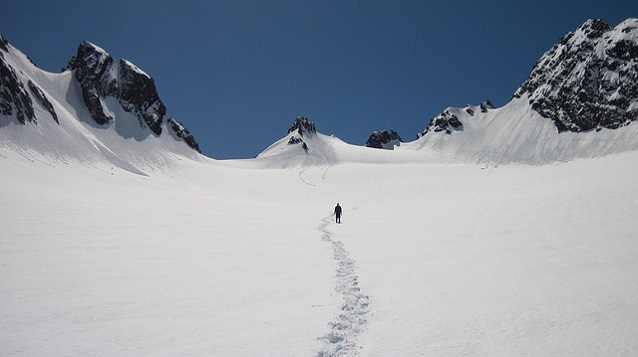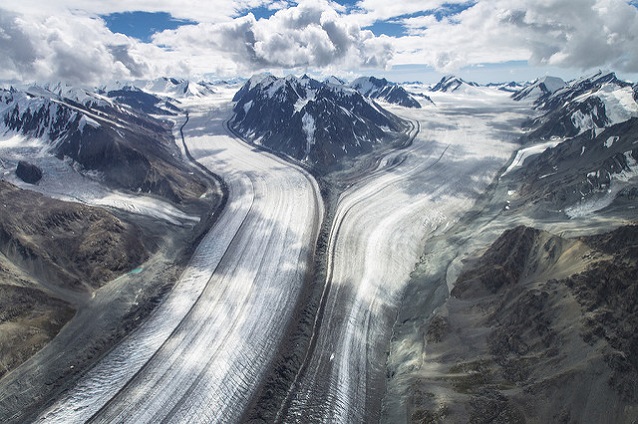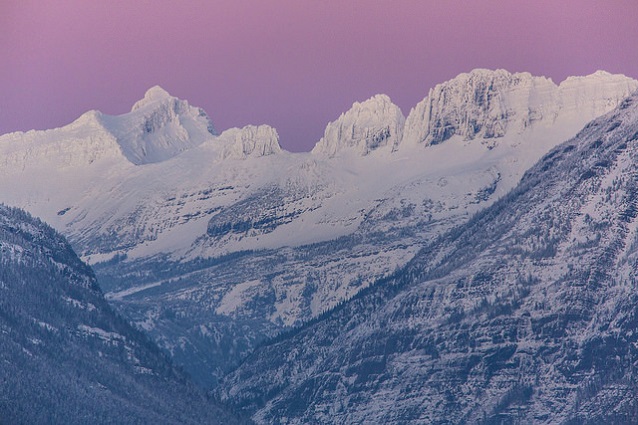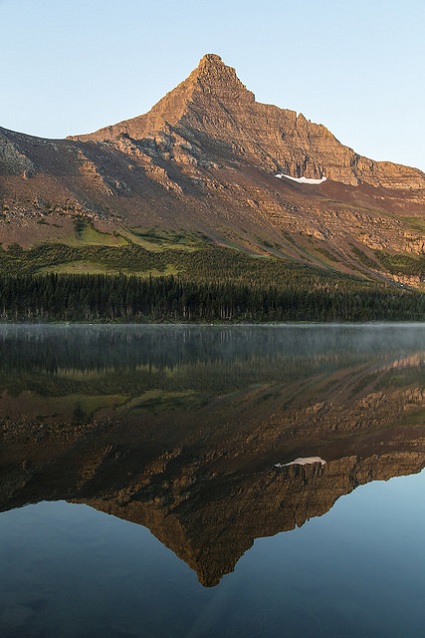
NPS Photo/B. Baccus
Nunataks, arêtes, and horns are the result of glacial erosion in areas where multiple glaciers flow. When the ice is present, they form stark, rocky outcrops above it, adding to the beauty of these harsh landscapes. Once the ice retreats, these uniquely-shaped features provide clear evidence of past glacier flow.
Nunataks

NPS Photo/Jacob W. Frank
Nunataks are rocky islands that are surrounded by flowing glacier ice. As the glaciers surrounding a nunatak come together, a medial moraine composed of rockfall from the nunatak often marks their confluence.
Arêtes

NPS Photo/Jacob W. Frank
An arête is a thin, jagged crest that separates—or that once separated—two adjacent glaciers. These rugged ridgelines often look like serrated knives or saw blades, with steep sides and a sharp crest. The low points on the serated surface are known as cols. Cols act as spillways for the ice and occur where glacier action has eroded the rock sufficiently to overtop it.
Horns

NPS Photo/Jacob W. Frank
Horns are pointed peaks that are bounded on at least three sides by glaciers. They typically have flat faces that give them a somewhat pyramidal shape and sharp, distinct edges.
To learn more about glaciers, glacier features, and glacial landforms, see the Glaciers & Glacial Landforms Page.
Part of a series of articles titled Glacier Landforms.
Previous: Cirques
Last updated: February 9, 2018
